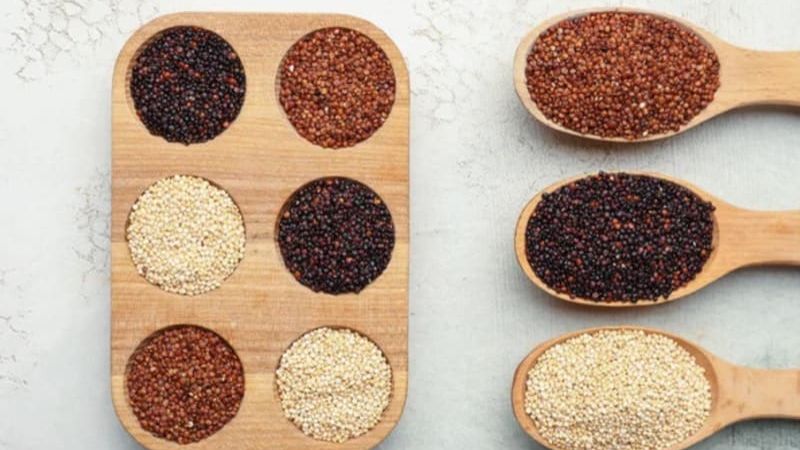

Our Review Process
Our articles undergo extensive medical review by board-certified practitioners to confirm that all factual inferences with respect to medical conditions, symptoms, treatments, and protocols are legitimate, canonical, and adhere to current guidelines and the latest discoveries. Read more.
Our Editorial Team
Shifa Fatima, MSc.
Author
Dr. Apoorva T, MHM.
MEDICAL ADVISOR
Millets For Diabetes
Diabetes is a condition where the body either does not produce enough insulin to break down glucose or cannot use the insulin efficiently when it's secreted by the pancreas. Thus, people living with diabetes can always look out for food items with a low glycemic index(GI), i.e., increasing blood-glucose levels gradually, instead of spiking it at once.
Carbohydrates are known to cause a spike in blood sugar levels. Hence people living with diabetes are wary of their carb intake. However, millets are good for people with diabetes because of their low GI and high nutritional content – albeit in moderation. Read to know more about is millet good for diabetics?
Table of Contents
Millet Glycemic Index
Millets are high in fibre and contain a variety of essential nutrients. They have a GI of 52.7, which is a medium value and lower than the values for maize, refined wheat flour, and rice.
Which Millet is good for Diabetes?
Pearl Millet : Pearl millets have been shown to improve insulin sensitivity and lower triglyceride levels. Because of its high fibre content, it is also very effective for diabetes management. When compared to other foods, it digests slowly and releases glucose into the blood at a slower rate. Also read about best grains for diabetes.
Nutritional Profile
Millets are a family of grasses known as Poaceae, which bear small seeds, grown traditionally in Asia and Africa for centuries. Millets are high in nutritional content and low in GI. They fall under the category of complex carbohydrates that help them keep their stomachs full for longer times, as compared to simple carbohydrates like white rice and wheat flour.
Millets are whole grains. The basic difference between processed grains and whole grains is that processing removes the outer membranes of these grains, making them nutritionally deficient compared to whole grains. Millet is an unprocessed grain and hence gives you a your complete dose of nutrition.
The different types of millets are,
· Common millet (also known as Pro so, Barri in India)
· Pearl millet (commonly known as bajra in India)
· Foxtail millet (commonly known as kangni in India)
· Finger millet (commonly known as ragi in India)
· Little millet (commonly called samai in India, a common form of rice substitute eaten during fasts)
· Sorghum millet (commonly known as jowar in India)
· Kodo millet (commonly known as Kodra in India)
The scientific basis behind feeling fuller for longer is low GI. This means that millets will cause a slow and gradual increase in blood sugar levels, which helps the body use glucose more sustainably. Read more about is ragi good for diabetes.
Besides being low in GI, millets are also high in essential macronutrients like fibre and proteins while also being rich in micronutrients like vitamins, minerals and antioxidants. Millets are also gluten-free, making them suitable for people with gluten intolerance (Celiac disease). Hence, millets can be seen as an alternative form of grain suitable for a larger population.
If you have been diagnosed with diabetes or face issues due to increased blood sugar, millets are your “go-to” option. There are multiple health benefits of millet for people living with diabetes.
One cup of millet contains approximately,
· 119 Kcal (498 KJ) energy
· 6.11 grams of protein
· 2.26 grams of fibre
· 76.6 milligrams of Magnesium
· 108 milligrams of potassium
· 0.63 milligrams of iron
· 3 milligrams of Calcium
· 100 milligrams of Phosphorus
· 44 milligrams of Magnesium
· 62 milligrams of potassium
· 1 gram of fat
There have not been many scientific studies to identify the individual health benefits of all the different forms of millet. Still, all scientists and researchers have unanimously agreed that millets help control high blood sugar levels and are easily digested. In addition, dietary fibre content is, high in millets, which helps better absorb in absorbing food better. Studies also show that whole grains reduce the overall risk of type 2 diabetes significantly. Whatever you eat, your body will absorb more nutrition when you have dietary fibre. Even if you are not diagnosed with diabetes but want to keep track of your health and fitness, millets are an excellent alternatives to conventional forms of food grains like rice and wheat. Also know about Indian diabetes diet.

Can people with Diabetes eat Millet daily?
Can diabetics eat millet daily? Yes, millets can be included in moderation as a part of the daily diet for people with a risk of developing diabetes, as well as those with predominantly high and borderline blood-sugar levels. A team of researchers conducted a study in 2021, led by the Smart Food Initiative at ICRISAT. This study explored the effect of millets on blood sugar levels and concluded that the percentage drop in blood glucose levels after people had millets was long-lasting.
People participating in the study, who had high blood sugar levels and were diagnosed with diabetes, went to prediabetes levels, with a 12-15% drop in blood sugar when they included millets as a part of their daily diet. Moreover, the HbA1c (blood glucose bound to haemoglobin, also known as glycated haemoglobin) levels went down by an average of 17% for people with borderline (prediabetes) blood sugar levels, bringing them to normal levels in these people.
Millets and blood sugar levels
You need to know and understand the GI scale and how millets are placed on this scale. The GI is from 0 to 100. Millets are lower in the GI index, but this also depends on the type of millets being consumed.
Foxtail, little finger, and pearl millet have a GI value ranging from 54 to 68. Jowar millet, however, has a higher GI value of 70. It should be consumed at lower levels as compared to others.
How do people with diabetes use millet?
Millets are best consumed at breakfast. Starting your morning with low GI food ensures you are full for long hours, have the necessary energy to perform all routine tasks, and have a healthy blood sugar level throughout the day. Most people have millets in the form of porridge and oatmeal for breakfast. You may also make a healthy khichdi with millets and vegetables and have it for lunch. Using different forms of millet flour for making rotis or chapatis is also a common practice, with people opting for healthier meals. Innovative recipes like stuffing chicken breasts with millets with a dash of (unprocessed) cheese and herbs may also be a refreshing twist to mundane chicken recipes.
Bottomline
Millets can help maintain a healthy blood sugar level and keep your hunger cravings in control. In addition, it prevents you from overeating and bingeing on processed food. Therefore, , including millets in the daily routines for people with or at risk of being diagnosed with diabetes, helps helping maintain sustained blood glucose levels on a long-term basis.
FAQs
Is millet good for diabetics?
High-fiber, low-GI foods stabilise blood sugar, lower cholesterol, and aid in weight loss. All of these things are beneficial to diabetics.
References
- https://www.healthline.com/health/diabetes/millet-for-diabetes
Disclaimer
This website's content is provided only for educational reasons and is not meant to be a replacement for professional medical advice. Due to individual differences, the reader should contact their physician to decide whether the material is applicable to their case.








